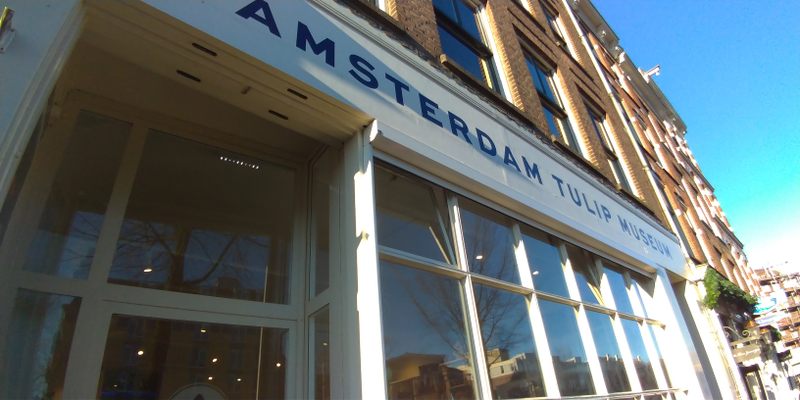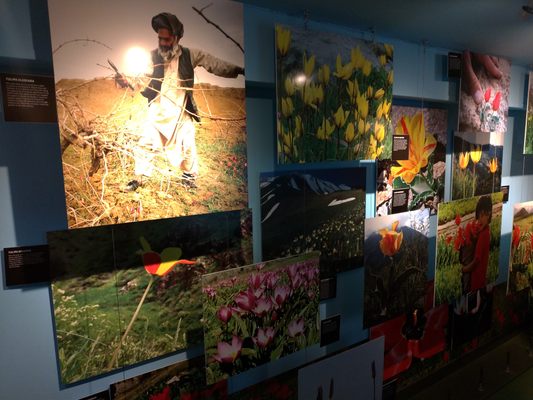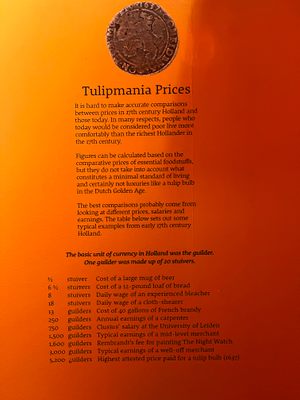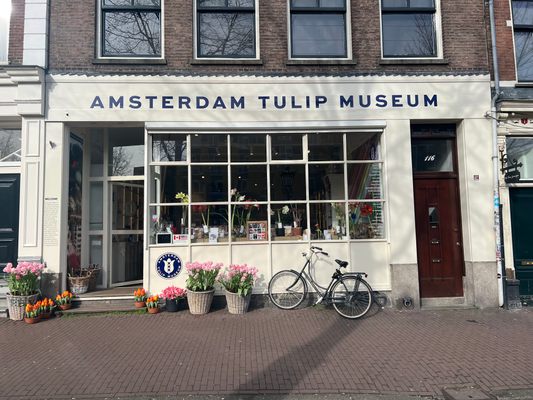About
This is no ordinary flower shop or tourist stop. Tucked in the back of the flower store is a small museum that details the history of the Netherlands's iconic symbol.
The tulip has a strong association with the Netherlands, as it's the country's national symbol. People come from around the world to see the country's massive tulip fields. But many are unaware that the tulip isn't even native to the Netherlands—they're originally from the Himalayas.
The Ottomans were filling gardens with tulips by the 15th century. The plant made its way to the Netherlands around the 16th century, where its popularity flourished.
Seen as a symbol for the rich, the beautiful flowers would sometimes sell for prices significantly higher than the average person's annual average salary. Of course, this was not sustainable, and the tulip market soon crashed. It took about 200 years for the tulip market to recover, and recover it did. The Dutch began cultivating tulips in great numbers, and continue to do so to this day.
All this and much more can be learned at the Amsterdam Tulip Museum, which is housed in the back of a tulip shop in central Amsterdam.
Related Tags
Know Before You Go
The flower shop itself is free to enter, and sells various rare kinds of bulbs and souvenirs, sometimes even edible bulbs. The museum entrance is in the back of the shop. The museum is 5 euros for general admission, and 3 euros for students.
Community Contributors
Added By
Published
December 31, 2019
Sources
- https://en.wikipedia.org/wiki/Tulip_mania
- https://www.barrons.com/articles/the-real-story-of-the-dutch-tulip-bubble-is-even-more-fascinating-than-the-myth-youve-heard-51557666037
- https://www.holland.com/global/tourism/discover-holland/traditional/tulips/history-of-tulips-in-holland.htm
- https://www.smithsonianmag.com/history/there-never-was-real-tulip-fever-180964915/





































